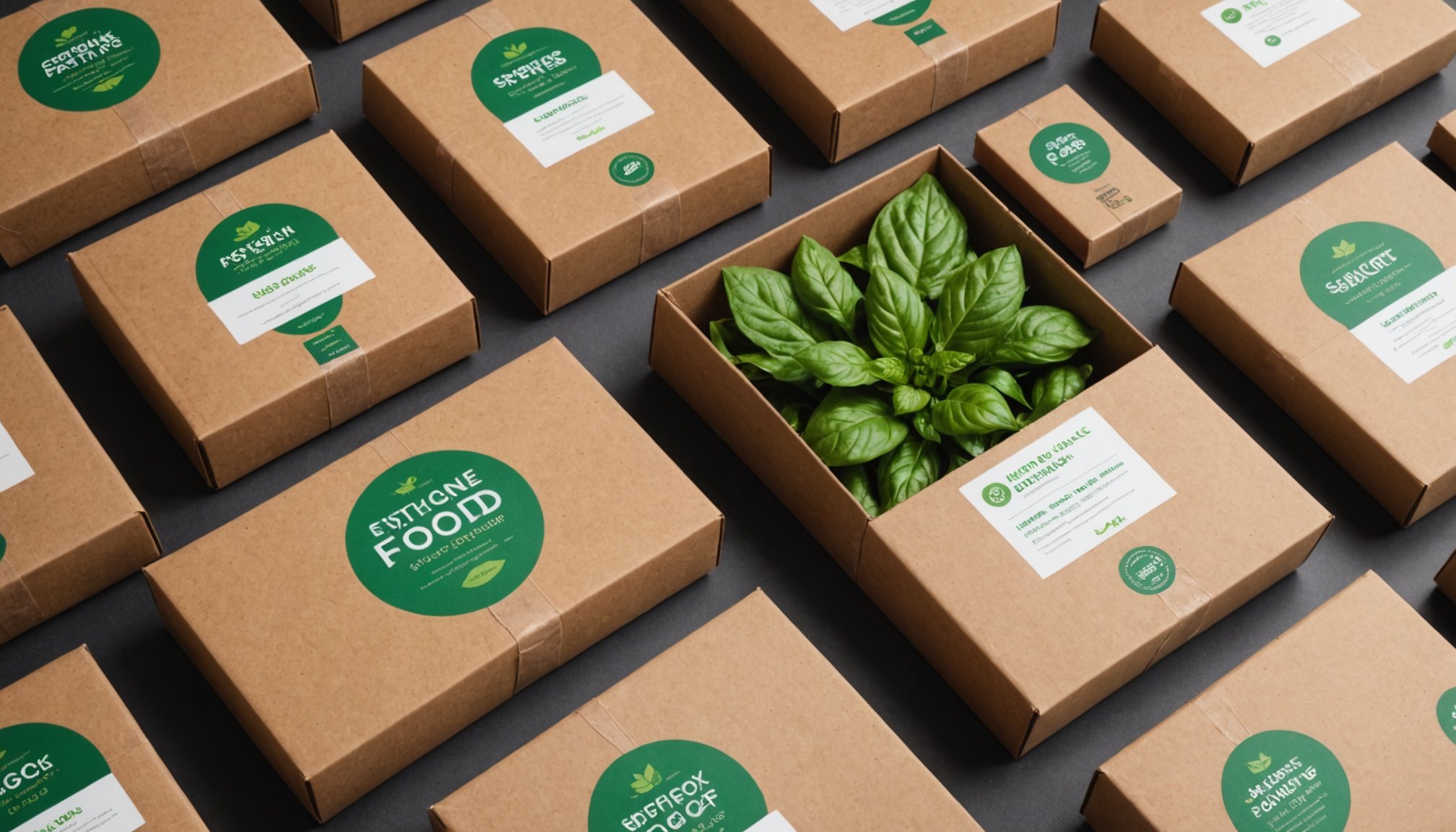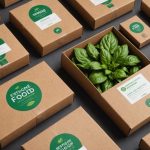Overview of Eco-Conscious Food Packaging
The modern focus on sustainability has led to the growth of eco-friendly packaging options in the food industry. Eco-conscious food packaging refers to materials and products designed with minimal environmental impact. This approach encompasses reducing waste, using renewable resources, and ensuring materials are biodegradable or recyclable.
Sustainable packaging materials are integral to this movement. They include solutions like bioplastics, which are derived from natural substances such as corn starch and sugarcane. Another popular choice is paper-based materials sourced from responsibly managed forests.
Also to see : Top Strategies for UK Manufacturers to Cut Carbon Emissions Effectively
In the UK, there is a burgeoning market for innovative packaging solutions that prioritise sustainability. Local businesses are increasingly adopting UK packaging solutions that not only meet consumer demand for greener products but also comply with tighter regulations on packaging waste.
- Biodegradable films offer a similar functionality to traditional plastics but decompose more rapidly in natural environments.
- Glass and aluminium are highly recyclable, maintaining their integrity through multiple cycles of reuse.
- Compostable packaging materials break down within home or municipal composting facilities, contributing to soil health.
This focus on sustainability ensures that the packaging industry supports the health of our planet while continuing to meet consumer needs effectively.
Also to see : Maximize customer loyalty: designing a winning rewards program for uk coffee shops
Types of Eco-Friendly Packaging
Eco-friendly packaging offers a sustainable alternative to conventional materials, addressing environmental concerns. Different types of eco-friendly packaging include biodegradable packaging, compostable materials, and recyclable packaging. This section explores these options with detailed insights into their characteristics, benefits, and practical applications.
Biodegradable Packaging
Biodegradable packaging refers to materials that can decompose naturally without harming the environment. Unlike traditional plastics, biodegradable options, such as polylactic acid (PLA) or cellulose-based materials, break down more swiftly. These materials are particularly beneficial in reducing landfill waste and pollution. In the UK, options like plant-based bags and biodegradable films are gaining traction due to their reduced environmental impact compared to typical materials.
Compostable Materials
Compostable materials decompose into non-toxic components under composting conditions. The key difference from biodegradable materials is that compostables provide nutrients to the soil. Benefits include enriching the earth and lowering overall waste. Suppliers like Vegware and Biopac in the UK offer a range of compostable products suitable for various needs.
Recyclable Packaging
Recyclable packaging is designed for reuse in new products. It meets specific criteria, such as simplicity of material separation. However, challenges persist, particularly regarding collection infrastructure and public awareness in the UK. Case studies, like the Loop initiative, highlight successful approaches to improving packaging recyclability, showcasing innovative solutions.
Benefits of Eco-Conscious Food Packaging
Adopting eco-conscious food packaging strategies can lead to significant positive effects on the environment and contribute to waste reduction. By utilizing materials that are biodegradable, compostable, or recyclable, companies can significantly decrease their environmental impact. This not only helps in conserving natural resources but also reduces the overall carbon footprint, supporting a sustainable future.
The burgeoning trend towards sustainability in consumer preferences cannot be overstated. Modern consumers are increasingly prioritizing products that align with their values of environmental protection. As more individuals become aware of the environmental impact of their purchasing choices, they gravitate towards brands that demonstrate genuine commitment to these causes.
In this context, implementing sustainable packaging solutions can improve consumer trends and bolster brand loyalty. Companies that prioritize such initiatives are witnessing heightened consumer trust and a robust brand image. They’re seen as leaders in sustainability, appealing to environmentally-conscious consumers who are willing to invest in products that contribute positively to the planet. Ultimately, eco-conscious food packaging is not just an ethical decision but a strategic one that aligns business objectives with the growing demand for ecological responsibility.
Sustainable Packaging Suppliers in the UK
Navigating the landscape of sustainable packaging suppliers in the UK can be a daunting task. Among the top players are market leaders who are setting a benchmark in eco-friendly practices. These suppliers not only emphasize sustainability but also excel in innovation.
Packaging wholesalers in the UK are increasingly focusing on minimising their environmental footprint, by employing renewable materials and reducing waste. Some key names in the industry include suppliers renowned for their dedication to eco-conscious practices and creativity in packaging solutions. These suppliers offer a range of products from biodegradable bags to recyclable boxes, appealing to eco-friendly businesses.
Selecting the right supplier involves evaluating a few critical criteria. Businesses should look for suppliers who prioritise sustainable materials and innovative technology. Suppliers that can provide evidence of sustainable practices and have a commitment to reducing carbon emissions stand out in the growing market.
A showcase of innovative packaging solutions can be seen from leading suppliers introducing unique products like compostable packaging and flexible bio-based materials. These products not only meet sustainability goals but also cater to the demand for quality and durability in packaging. These efforts underscore the potential for market leaders to spearhead a shift towards greener packaging solutions in the UK.
Regulatory Considerations
In the UK, food packaging is tightly controlled by various regulations to ensure safety and compliance. Businesses dealing with food packaging must stay informed about these laws, as failing to comply can result in penalties and reputational damage. The primary legislative framework includes the Food Safety Act 1990 and the Packaging (Essential Requirements) Regulations 2003. These dictate criteria on safety, hygiene, and labelling. Additionally, compliance with environmental legislation, such as the UK Plastic Packaging Tax, is crucial for businesses aiming to demonstrate responsibility and sustainability.
Importance of Compliance
Adhering to these regulations is not merely a legal obligation; it also highlights a brand’s commitment to consumer safety and environmental care. Compliance can enhance customer trust and open up market opportunities that reward sustainable practices.
Future Trends
Future trends may see an intensification of environmental legislation, compelling companies to rethink packaging choices. This could involve adopting biodegradable materials or reducing plastic usage to align with eco-friendly goals. Staying ahead of these trends can offer a competitive edge, allowing businesses to not only meet compliance but also thrive in a market increasingly demanding sustainable solutions.
Best Practices for Adopting Eco-Conscious Packaging
Transitioning to eco-friendly packaging requires careful planning and execution. Businesses should start by assessing their current packaging processes and identifying areas for improvement. Once those areas are identified, establishing sustainable packaging strategies is crucial. This involves selecting materials that are biodegradable or recyclable and investing in packaging designs that minimize waste.
A critical component of the transition is ensuring that employees are well-informed and supportive of these changes. Implementing a comprehensive employee training program fosters awareness and accountability throughout the organization, creating a unified effort towards sustainability. Engaging staff in workshops or seminars can provide valuable insights into sustainable business practices and emphasize the environmental and economic benefits of eco-friendly packaging.
Several companies have successfully made the switch to sustainable packaging. For instance, a well-known cosmetics brand transitioned to using compostable materials, significantly reducing their environmental footprint. Another example is a food company that reimagined its packaging design by using materials sourced from sustainable forests, which not only decreased packaging waste but also enhanced their brand image.
By adopting these best practices, businesses can not only contribute positively to the environment but also potentially increase overall customer satisfaction and brand loyalty through their commitment to sustainability.
Case Studies of Successful Implementations
Exploring eco-friendly packaging case studies reveals how a strategic shift towards sustainability can enhance business success. One notable example is a leading cosmetic brand that transitioned to recycled and biodegradable materials, witnessing a remarkable increase in customer loyalty. The change not only resonated well with environmentally conscious consumers but also set a precedent within the industry, highlighting the role of sustainability in practice.
Detailed Analysis of Businesses
Businesses that successfully adopt eco-friendly packaging often experience a surge in sales. The transition fosters a positive brand image, attracting customers eager to support sustainable practices. A deep dive into these transformations uncovers patterns shared across successful brands, like sourcing locally and opting for minimalistic designs.
Impact on Sales and Customer Perceptions
Implementing green practices boosts customer perceptions significantly. Consumers today are increasingly drawn to companies that reflect their values, making eco-friendly packaging a vital component of brand identity. Enhanced market visibility and customer engagement are common outcomes, underscoring the importance of sustainability in practice.
Lessons Learned and Recommendations
For businesses considering this path, the key is to integrate sustainability authentically. Recommendations include involving all stakeholders from the onset, conducting thorough market research, and transparently communicating the initiative’s impact. By learning from these successful business examples, others can implement impactful, eco-friendly changes.
Comparisons of Different Eco-Friendly Packaging Materials
When considering eco-friendly alternatives, it’s crucial to understand the effectiveness of packaging materials for various applications. This involves a side-by-side analysis of distinct sustainable materials, each possessing unique qualities.
One popular option is biodegradable plastics, designed to break down more quickly than traditional plastics. They are effective in reducing long-term environmental impact but might lack the strength of conventional materials. Hence, their usage is frequently recommended for light packaging needs.
Conversely, recycled paper is an attractive choice due to its widespread availability and disposal ease. This material excels in providing durable and impactful packaging solutions. It is ideal for businesses with significant volume needs and aims to emphasize a commitment to sustainable practices.
For more niche requirements, mushroom-based packaging presents an innovative alternative. Though it offers excellent protection and is fully compostable, its production scalability might not yet meet high-demand industries’ needs.
When selecting the appropriate material, businesses must weigh these factors against their specific objectives. Strategies should align with the company’s desired image, environmental priorities, and product-specific requirements, enabling an informed decision that marries sustainability with business efficacy.











